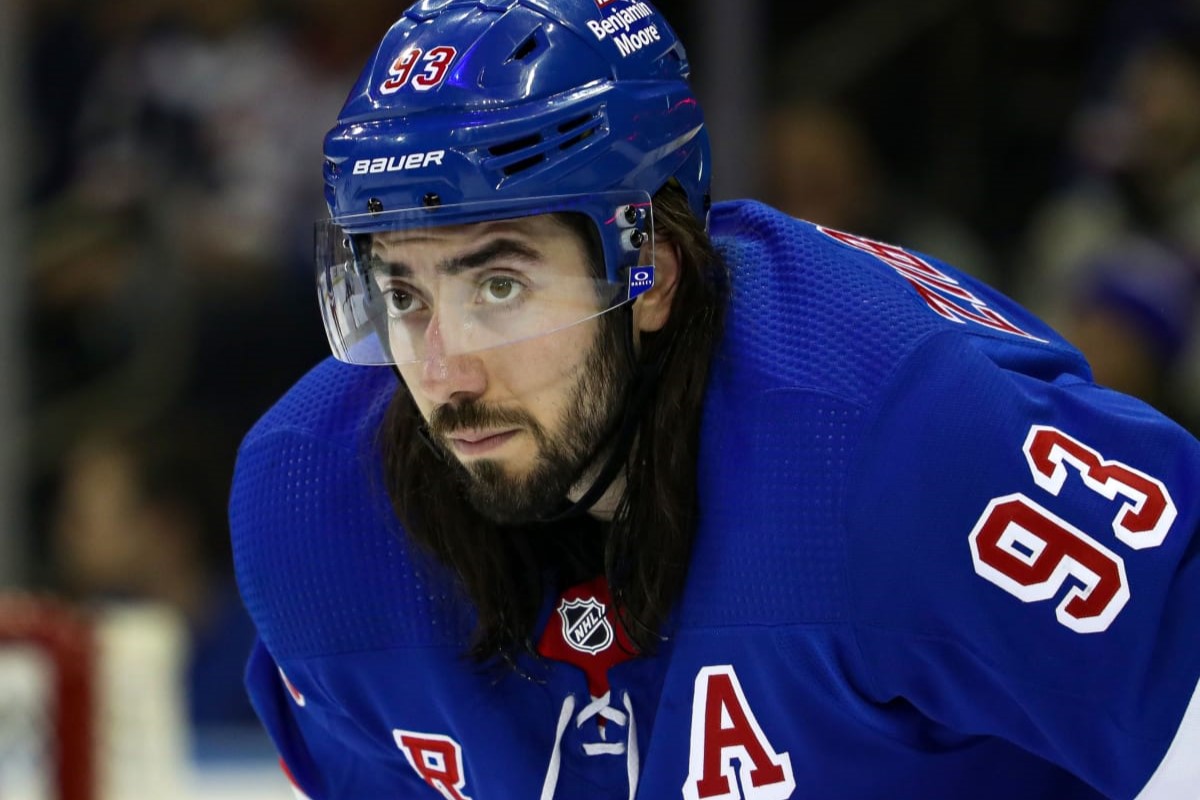
The first key building block to begin the New York Rangers transition into a new era arrived as part of a trade that took place on July 18, 2016. On that day, the Rangers acquired center Mika Zibanejad and a second-round pick in the 2018 NHL Draft from the Ottawa Senators in exchange for center Derick Brassard and a seventh-round pick in the 2018 draft.
Though it can now be argued that this was one of the best trades in Rangers history, it wasn’t a universally popular deal when it went down eight years ago. Brassard was a popular top-six center who earned the nickname “Big Game Brass” with his clutch play in the Stanley Cup Playoffs, helping the Rangers reach the Stanley Cup Final in 2014 and the Eastern Conference Final in 2015. Zibanejad was 23 and had a couple of 20-goal seasons already on his resume but was considered somewhat of a disappointment as the No. 6 overall pick in the 2011 NHL Draft.
But general manager Jeff Gorton believed Zibanejad was just starting to scratch the surface of what he’d become as a dynamic NHL player. And Gorton knew that he’d be selling high on Brassard, who was coming off a 27-goal season in 2015-16. Brassard was also six years older and on a much more expensive contract.
Brassard never scored more than 18 goals or 39 points in a season again. He announced his retirement from the NHL earlier this offseason.
Zibanejad had only 37 points in 56 games his first season in New York, but has rung up seven straight 20-goal seasons since, including 41 goals in only 57 games in 2019-20 and 39 two seasons ago. He had an NHL career-high 91 points in 2022-23.
Simply, Zibanejad is one of the top two-way centers in the League, even with questions about his 5v5 production and playoff struggle this past spring in the conference final loss to the Florida Panthers.
Mika Zibanejad acquisition in 2016 began Rangers transition

Though “The Letter” issued by the Rangers to their fans on Feb. 8, 2018, was the official start of a major rebuild, it was swapping Brassard for Zibanejad that signaled a forward-thinking approach on Broadway with the Henrik Lundqvist era nearing an end. Trading Brassard was the first domino to fall, followed a year later by the trade of center Derek Stepan to the Arizona Coyotes and the major sell-offs to come with Ryan McDonagh, J.T. Miller, Rick Nash and Mats Zuccarello among those traded. Moving on from Lundqvist was the final cutting of the cord of a largely successful run in the 2010s.
The Rangers built up around Chris Kreider, who was already in place, and Zibanejad, who emerged as a star even as the Rangers were rebuilding. Artemi Panarin, Adam Fox, Ryan Lindgren and Igor Shesterkin all arrived at The Garden in 2019-20. Two years later, with Chris Drury now their GM, the Rangers rebuild was over when they reached the Eastern Conference Final, where they lost in six games to the Tampa Bay Lightning.
Two years after that, the Rangers set franchise records for wins (55) and points (114) in a season and captured the Presidents’ Trophy. Again, they reached the conference final, only to lose in six games to the Panthers.
The stakes are so much higher now than when Zibanejad was acquired eight years ago. Then the Rangers were a good team in transition to a rebuild after several memorable playoff runs. Now they’re legitimate Stanley Cup contenders, trying to end a three-decade championship drought.
And that first building block is still here, trying to see the transition through to a championship. Zibanejad is 31 now and has six years left on a contract that pays him $8.5 annually.
He has been, and remains, the focal point of Rangers ever since arriving in that trade with the Senators.





